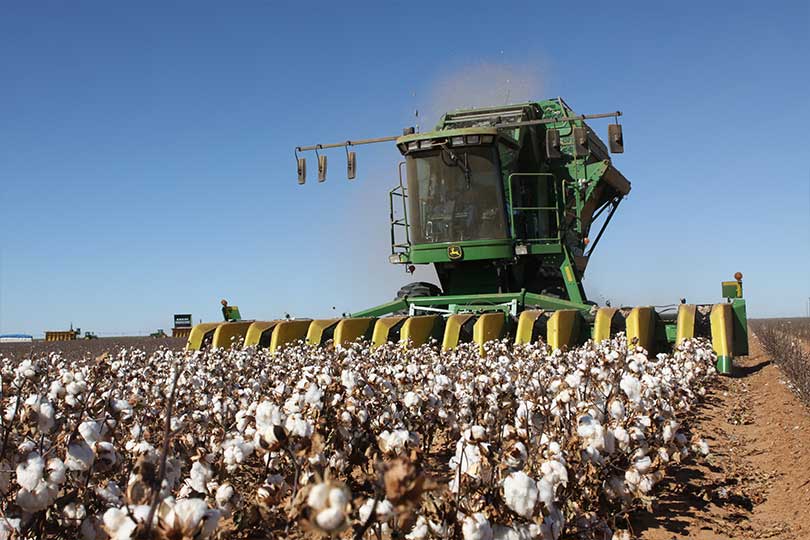By Jessica Domel
Multimedia Editor
Low prices for other commodities enticed American farmers to plant more cotton this year, and that could lead to the largest crop in 11 years, according to a new report from the U.S. Department of Agriculture (USDA).
U.S. production
The first survey of the U.S. cotton crop this year forecasts an American crop of 20.5 million 480-pound bales of cotton, an increase of about 1.5 million bales over last month’s projection.
Yields are forecast to average 892 pounds harvested per acre, which is up 25 pounds over the year.
Upland cotton production is forecast nationally at 19.8 million bales, up 19 percent. Pima cotton production is anticipated at 770,000 bales, up 35 percent over 2016.
According to USDA’s World Agricultural Supply and Demand Estimates (WASDE) report, the larger crop will be partially offset by a smaller supply at the beginning of the year. Beginning stocks are reduced 400,000 bales to 2.8 million bales. That’s likely due to an increase in final 2016-17 exports.
Domestic mill use for 2017-18 is lowered in this month’s report by about 50,000 bales, but exports are raised 700,000 bales. That’s largely due to the larger supply and strong early season commitments, according to USDA.
Ending stocks for the U.S. are now projected at 5.8 million bales. If realized, it would be the largest since 2008-09.
This year, USDA forecasts farmers will receive a range of 55-67 cents per pound of cotton. That’s down one cent on each end, likely due to the larger crop.
Oil prices also weigh on the price of cotton. Since oil is cheaper, man-made fibers are also cheaper. Those fibers are a competitor to cotton at home and abroad.
The average cost of production this year is 61 cents per pound.
Texas production
USDA’s National Agricultural Statistics Services’ (NASS) new report, out last week, forecasts about 5.7 million acres of upland cotton are planted in Texas this year. That’s half-a-million acres higher than 2016, but lower than the April forecast of nearly seven million acres.
Upland cotton yields are forecast at 741 pounds per acre, down seven pounds from last year.
Production in Texas is estimated at 8.8 million bales this year, which is an increase of 700,000 bales.
Pima cotton acreage remains at 15,000 acres this year. Yield is forecast at 960 pounds per acre. That’s down about 100 pounds per acre, according to NASS.
Pima cotton production, as a result of the yield loss, is forecast down in Texas 30,000 bales. That’s 3,000 bales less than were produced last year.
Global production
Larger production globally is raising this month’s global stock forecasts for 2017-18, according to the report.
World production is forecast up 1.9 million bales due to higher production in the U.S., China and Benin. It’s partially offset by the reduction in Turkey.
Global demand
World consumption for 2017-18 is estimated 375,000 bales higher this month due to a half-million bale increase in China.
Growth in world cotton consumption for the year is projected to be at its highest rate in five years at 3.3 percent.
Global ending stocks for 2017-18 are now forecast at 90.1 million bales. That’s up 1.4 million from USDA’s July projection. It is 100,000 bales above last year.
The next WASDE report will be released Sept. 12 at https://www.usda.gov/oce/commodity/wasde/.

